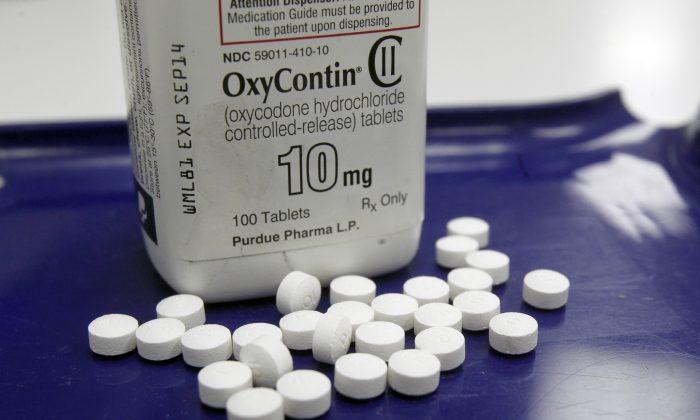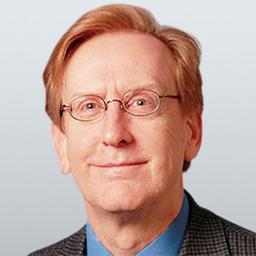What do conservative talk show host Rush Limbaugh, singer Courtney Love, and deceased actor Heath Ledger all have in common? The answer, according to published reports, is that all battled addiction to OxyContin, an opioid pain reliever now sometimes called “rich man’s heroin” but known on the street simply as “Killer.”
The sources of the opioid epidemic are complex, but one powerful motivator has been the pursuit of profit. Purdue Pharma, which calls itself a “pioneer in developing medications for reducing pain, a principal cause of human suffering,” is the producer of OxyContin, a timed-release formulation of oxycodone, an opioid pain reliever.
OxyContin, like other prescription opioids such as hydrocodone, has become far more commonly prescribed over the past few decades. Today enough opioid prescriptions are written each year in the United States to give every adult American his or her own one-month supply.
A Family Firm Creates a New Pain Drug
Purdue Pharma was founded in the late 19th century in New York City, and the firm was purchased in the 1950s by the Sackler brothers—Arthur, Raymond, and Mortimer—three physicians. Some years later, the firm began producing opioid pain relievers.
One of the Sackler brothers, Arthur, who died in 1987, had been inducted into the Medical Advertising Hall of Fame for his promotional work in helping Valium to become the first $100 million drug.
In 1996, Purdue Pharma introduced a new drug—a time-released formulation of oxycodone, an opioid painkiller. OyxContin, as the drug was called, was touted as having a low risk of addiction.
Purdue backed OxyContin with an aggressive marketing campaign. Key components of this effort were pain-management and speaker-training conferences in sunshine states such as California and Florida, attended by more than 5,000 physicians, nurses, and pharmacists, many of whom were recruited to serve on Purdue’s speakers’ bureau.
The company also used a bonus system to incentivize its pharmaceutical representatives to increase OxyContin sales. The average bonus exceeded the representatives’ annual salaries.
Of course, Purdue was not alone in marketing its pain-relieving products in this way. The Oregon assistant attorney general, for example, described the practices of Insys Therapeutics in marketing its oral spray painkiller as “among the most unconscionable I’ve seen.”
A Sea Change in Pain Treatment
These efforts succeeded spectacularly. According to a 2009 article in the American Journal of Public Health, OxyContin prescriptions for non-cancer-related pain went from about 670,000 in 1997 to about 6.2 million by 2002.
This is partly due to Purdue Pharma’s aggressive marketing of OxyContin. But pain treatment in the United States was also changing at this time.

Starting in the early and mid-1990s, a small group of physicians, some receiving funding from drug firms, began arguing that the medical profession had been systematically undertreating pain, motivated by erroneous concerns about addiction. They lobbied to have pain recognized as the “fifth vital sign,” and urged physicians to be more liberal in their prescribing of opioids. Some of these physicians were associated with professional associations focused on treating pain.
Undoubtedly, there were patients with undertreated pain who benefited from these campaigns.
In 2000, the Joint Commission, the organization that accredits hospitals, began requiring health care organizations to prove that they were assessing and treating pain. This led to a more liberal approach for prescribing painkillers like OxyContin, but other opioids were also involved.
OxyContin Prescriptions Grow and Grow
In 2001, Purdue spent $200 million marketing OxyContin, and by 2002 sales topped the $1.5 billion mark. In 2012, OxyContin represented about 30 percent of the overall painkiller market.
Between 1991 and 2013, the number of annual opioid prescriptions in the United States increased from 76 million to 207 million, with corresponding increases in the number of cases of addiction, overdose, and death.
As the numbers of cases of addiction, overdose, and death mounted, the Department of Justice took notice, and charged Purdue with misbranding the drug’s abuse potential. In 2007, Purdue pleaded guilty and paid over $600 million in fines. Three company executives also pleaded guilty to criminal charges of misbranding the drug’s risk of abuse and addiction.
In 2010, Purdue Pharma released a new formulation of OxyContin with an abuse-deterrent mechanism that is harder to crush or dissolve. The original formulation was withdrawn from sale, and in 2013, when OxyContin’s patent was set to expire, the FDA refused to approve generic versions of the original formulation.
Now, STAT NEWS, a news website focused on health and medicine, is suing Purdue Pharma to unseal records about what its executives knew about the drug’s addiction potential and whether they intentionally downplayed it.
The President’s Plan to Curb the Epidemic
The introduction of one drug, OxyContin, helped to spark the epidemic, but solving it is going to be much more complicated.
It is estimated that nearly two million Americans are addicted to prescription pain relievers, and drug overdose has become the leading cause of accidental death in the United States, exceeding motor vehicle accidents.
In the first decade of this century, the overdose death rate increased nearly four times, with admissions to addiction treatment programs up six times over the same time period. Prescription opioids now kill more Americans every year than illegal ones.

According to the American Society of Addiction Medicine, four in five new heroin users started out by misusing prescription painkillers, and 94 percent of opioid-addicted patients said that they switched to heroin because prescription opioids were more expensive and harder to obtain.
This secondary epidemic of illicit drug use is a new public health challenge that is hitting small towns and rural areas particularly hard.
President Obama’s efforts to combat opioid abuse are attracting broad, bipartisan support. Over 60 medical schools, including my own, have recently announced that they will include new federal prescribing guidelines in their curricula.
Leaders of all stripes are recognizing that to successfully prosecute the war on drugs, attention needs to shift stateside, to pharmaceutical companies, hospitals, and physicians. Legal opioids prescribed by physicians have proved far more dangerous than the illicit ones.
Richard Gunderman is chancellor’s professor of medicine, liberal arts, and philanthropy at Indiana University. This article was originally published on The Conversation.







Friends Read Free